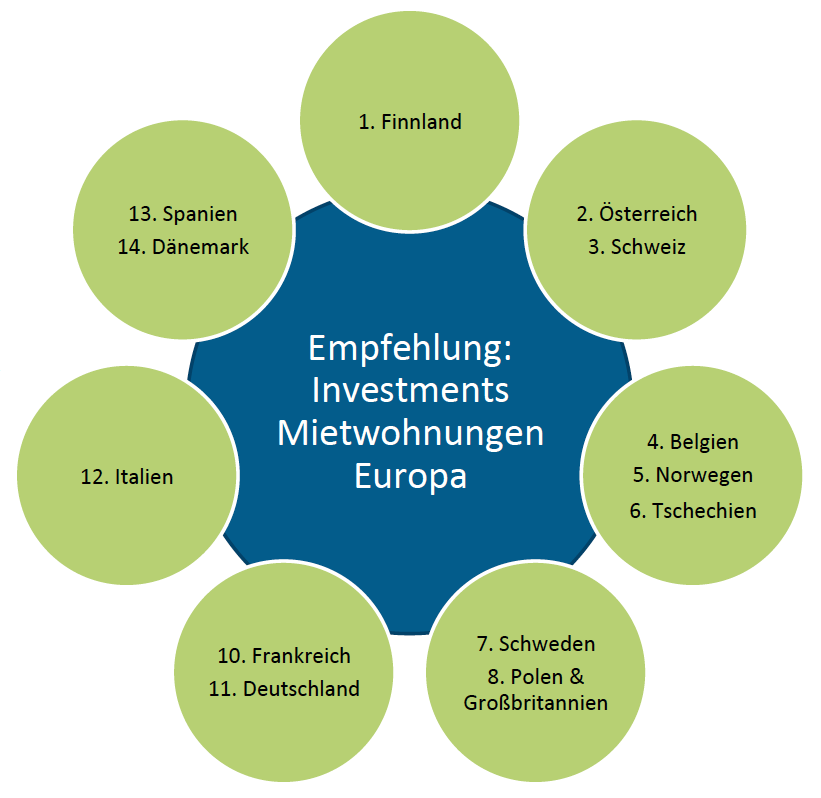European Rental Housing Markets: Where to Invest?
European Rental Housing Markets: Where to Invest?
We studied the conditions for landlords and investors in 14 European countries. Would you have guessed the country with the highest investment recommendation?
Our analysis was based on four indicators, these being rental housing market regulation, rises in construction costs, property price growth, and housing construction activity per resident. We drew on a variety of sources.
So, assuming that the best place for investors/landlords is the one with
- the least amount of housing market regulation,
- the slowest rise in construction costs,
- the fastest property price growth, and
- the busiest housing construction activity per resident,
and if you equally weight these four indicators and apply them to 14 European countries to obtain a ranking, then our investment recommendation would look like the chart below.
Finland takes the top spot, followed by Austria and Switzerland. These countries stand out with a comparatively low level of regulation and a somewhat slower rise in construction costs than elsewhere in Europe, especially in Switzerland and Finland, whereas the countries on the periphery of Europe, such as Turkey, Romania, Hungary or Latvia, are particularly hard hit by construction cost hikes (source: Eurostat). In combination with the steep rental uplift and the intense new construction activities—with one new flat built for roughly every 30 residents (compared to one for every 64 in Germany)—the conditions in these countries are particularly favourable.
But this is not to suggest that investing in Germany’s housing market is no longer a paying proposition, on the contrary. To be sure, Germany and France have the second-strictest housing market regulations in Europe, with only Denmark being more tightly regulated. The “rent freeze” rent control measure is acting like a further regulatory constraint, although its effectiveness on the ground has yet to be demonstrated. Nevertheless, Germany should by no means be dropped from the investment radar, because the sheer size of its market and the rich variety of potential investment locations, which continue to differ considerably in terms of building activity and housing demand, still present amazingly sound investment opportunities within the European context.
Note: Would you like to find out where in Germany the market risks and property yields are particularly well balanced for residential real estate investments? If so, read our Residential Investment Survey (German) complete with risk/reward comparisons for A-, B-, C-Class cities that we compiled together with d.i.i. Deutsche Invest Immobilien GmbH.
Contact person: Felix Embacher, Head of Division for Master Planning and Special Housing Types at bulwiengesa, embacher [at] bulwiengesa.de







